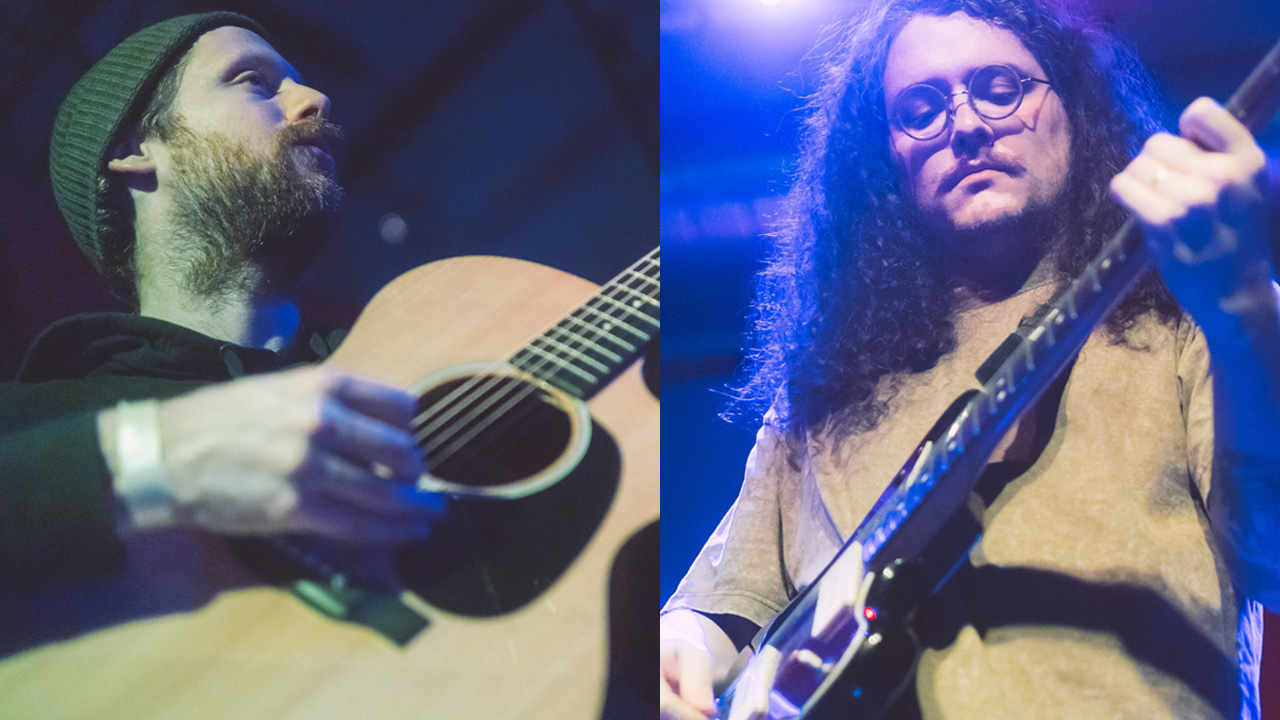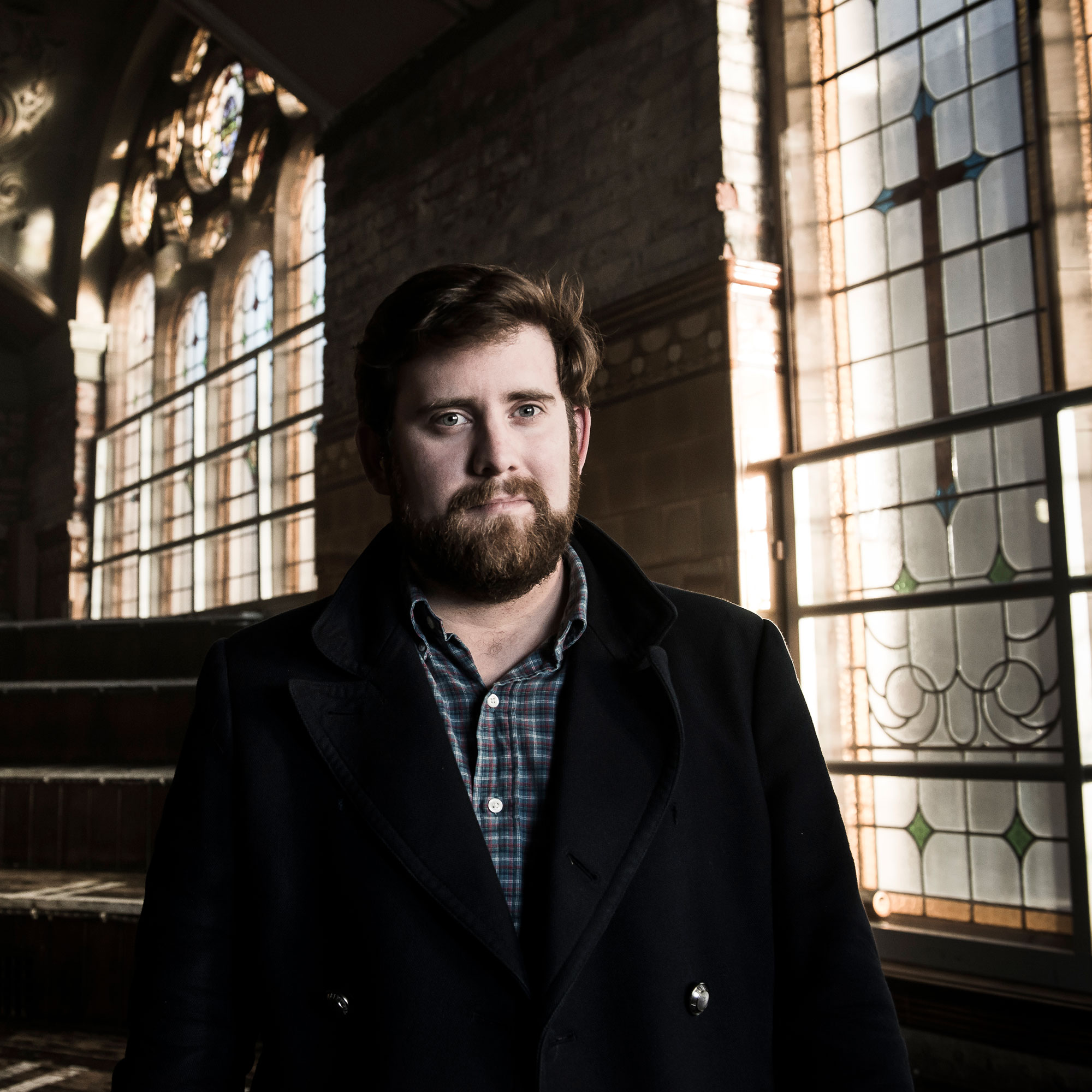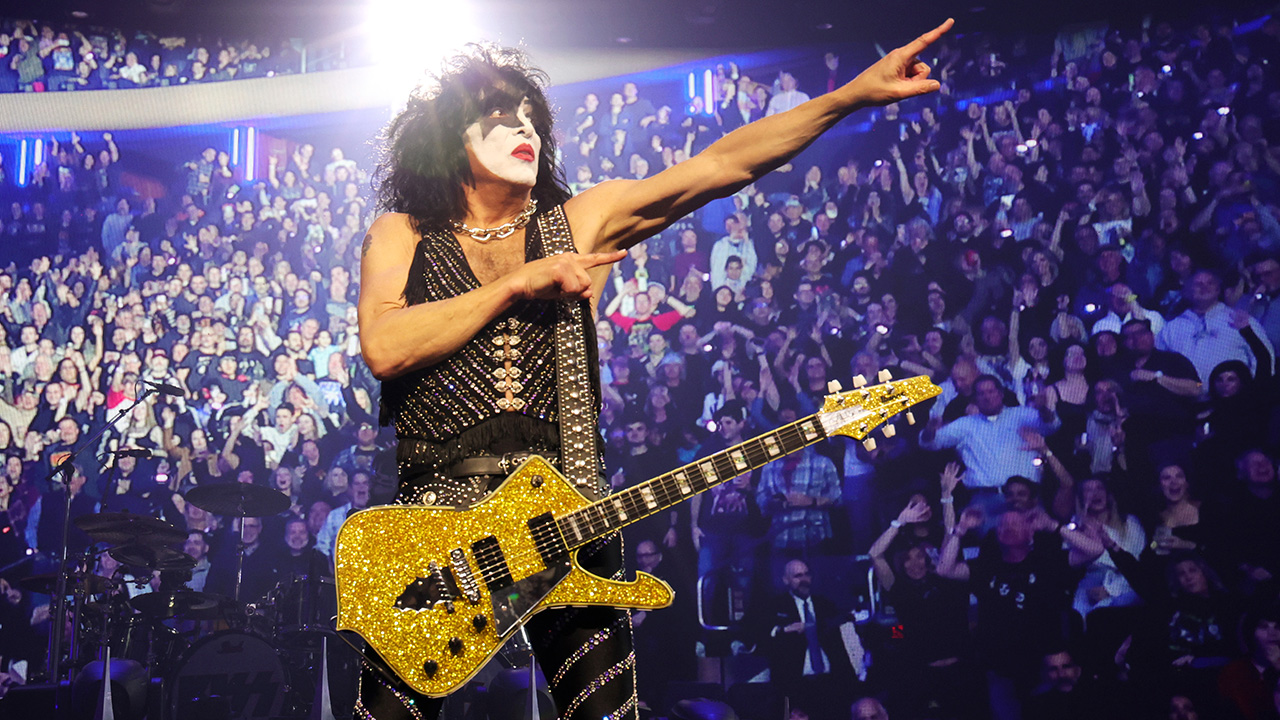“The main acoustic is a $100 Fender – the strings were super-old and dusty. We hate new strings!” Meet Great Grandpa, the unpredictable indie rockers making epic anthems with cheap acoustics – and recording guitars like a Queens of the Stone Age drummer
The mercurial Seattle indie rockers have returned with their first album in six years, Patience, Moonbeam – they tell us how their lush, multifaceted arrangements all begin on the humble six-string

Great Grandpa is a band full of surprises. They’re an indie rock group from Seattle, with a Berklee grad guitarist/producer in their midst, yet you’ll hear no ironed-out shred or impenetrable prog riffs. Their songs are full of lush left-turns, sliding transitions and melodic complexity, but their chief songwriter has had no formal training.
Even their return is a surprise: dropping their first album in six years – Patience, Moonbeam, the follow-up to 2019’s stellar Four of Arrows – after a period in which the band appeared to be on the rocks.
Songwriter/guitarist Pat Goodwin puts his idiosyncrasies as a writer and player down to the liberation he felt when – after years of plunking on his brother’s piano – he found the guitar.
“It’s like being a painter and you have four colors, versus suddenly having [infinite options]... The ability to slide between notes and bend notes just felt very freeing,” says Goodwin.
“And then the percussive elements like strumming, picking; it felt organic in a way the piano could never be. A lot of the guitar music that I really love takes advantage of that. Whether it’s Adrian Belew or Nick Reinhart… [it’s] the physicality of it.”
In-house producer and Goodwin’s co-guitarist, Dylan Hanwright, comes from a more schooled background, studying at Berklee, but has – fortunately, in this context – not left with the cleaner than clean technique that takes the fun of indie rock.
“I felt so like a fish out of water at Berklee,” he admits. “It is such a place of shredders and virtuosos and their whole thing is playing the guitar… but I’m really grateful for Berklee just jamming theory into my head. Pat and I have a communication style that was born at Berklee, using numbers, like the Nashville stuff.’”
All the latest guitar news, interviews, lessons, reviews, deals and more, direct to your inbox!
Now they’re here to communicate with us about how to tread the impossible line between prog and punk, how to stop your songwriting from getting boring – and why they’ve taken to recording guitars like a Queens of the Stone Age drummer…
Great Grandpa have the best arrangements and transitions between parts that I’ve heard in an indie rock setting. The songs always feel so lush and surprising. Where do you think that knack comes from?
Goodwin: “I’ve always been fascinated by music that is harmonically interesting or unpredictable. My dad, growing up, really liked a lot of the more musically literate singer-songwriters, like Billy Joel or Elton John. If you listen to Billy Joel stuff, you’re like, ‘This is doing some things under the hood that are quite sophisticated.’
“He was really into Queen and Bowie. In high school, I got into more progressive stuff – jazz and weird classical stuff. I like the novelty part of that, but sometimes the novelty is all there is and the spiritual core of it can be super hollow. I think with Great Grandpa, the complexity is like a cherry on top. But the core song is always something that’s very pop, resonant, emotional.”
Prog is often portrayed as a lumbering thing, but hammering a 4/4 chord sequence four times is boring too. How do you hold the listener’s interest in your writing?
Hanwright: “I think Pat’s superpower is being ADD with this, because I have a really hard time knowing where it’s like, ‘Okay, now it’s boring.’ I get tunnel vision, but Pat is really good at that trigger – ‘Nope, we’re going somewhere else!’ He has this ability, without knowing any theory necessarily, to do a weird chromatic change at the exact moment you want to feel something unexpected.
Goodwin: “I write a lot of Great Grandpa songs in very discreet chunks. I’m a constant curator and auditor of the things I write. I have a running list of a thousand ideas, some of which are very short. I’ll go back and audition all of these things and be like, I’m going to grab that and grab this…’
“Patience, Moonbeam, like Ladybug, has parts that were written in 2019 [next to] parts that were written in 2023. I feel like in songwriting, there’s rarely that level of patience to come back to things.
“I really love the art of trying to glue stuff together and make interesting transitions. On Ephemera, one of Cam’s songs, we needed to get from one key to the next, and Dylan was like, ‘Pat, go to the piano and figure it out.’’
Dylan: “Do the thing!”
Guitar is a frequency monster… so we’d remove strings from the guitar
Goodwin: “So I just wrote some stupid little thing that modulates, in a weird way, between four chromatic steps. We like that. It’s always a fun challenge.”
How important is the acoustic in your writing and recording? I think a lot of electric guitar players underestimate it as a studio tool.
Goodwin: “Very important. I think every song, except for Kid and Ephemera, was written on acoustic. I try to put all of the voicings I want to hear into the acoustic part – which we end up having to deconstruct, because the guitar is a frequency monster and it’s hard to control some of the resonant strings. So we’d remove strings from the guitar and re-track some stuff, then add those notes back in on other instruments.
Hanwright: “We’d be mixing and the notes would be, ‘Man, the acoustic is just like screaming at us!’ You have chords with huge open tunings letting notes ring out, and it’s the most important thing to these arrangements and Pat’s writing – but also [the most] detrimental to the mix. So we’d have Pat do just the low chords, then we’d strum on those high strings and feather it into the mix.”
Goodwin: “It’s like the guitar equivalent of drummers who remove the cymbals and do a take with only the toms, the snare and the kick, then do a cymbal take.”
Hanwright: “Yeah, it’s our version of Queens of the Stone Age.”
It’s easy as a guitarist to think the answer is always ‘guitar’ – but substituting parts written on certain strings for other instruments is a great way to open it up compositionally.
Hanwright: “I think it’s really important. If you’re writing in a way that the voicings are really important to you and it’s just acoustic and vocal, you have to anticipate pulling this out into into a group – to almost take every string and think, ‘Does this belong on the guitar? [Is this] strings, piano, something else? You don’t have to put it all in the guitar.”
Goodwin: “Or there could be no guitar at all [by the end].”
Which guitars did you use for the Patience, Moonbeam sessions?
Hanwright: “We recorded a lot of this stuff at Stage Arts, this beautiful studio in Granite Falls, Washington, kind of in the woods, and they have this huge vault of acoustics and electrics. The engineer had a Gibson ES-335, a hollow-body, but it had flat-wounds on it. And, specifically for Doom, we were trying to find a guitar tone to model after The Smile. We really like that clean, super compressed, finger-picked, very articulate thing, so we ended up on that and just fell in love with that sound.”
Almost all of the bass is DI with no amp simulation… in the mix it’s really punchy
Goodwin: “Then we used a variety of acoustics from very low-end to high-end. The main acoustic on Junior is a $100 Fender from 2006 – like, it’s Carrie’s childhood guitar and [still] has the stickers on it. The strings were super-old and dusty. One thing Dylan and I talk about a lot is how much we hate new strings!
“Then we used my Martin Road Series and I have a Gibson J-45 from the ’80s that is pretty finicky, but it’s really beautiful in its own way. Those are the main three acoustics.”
Hanwright: “We did use a Fender B-Bender on Junior, just because you have to, and it’s a really good-sounding Tele.”
What about on the pedals and amps side?
Hanwright: “We used the Hologram Chroma Console pedal. They make all sorts of really weird stuff, and this is the most usable, normal thing they have. We also fell in love with the Light Pedal by Gamechanger Audio.”
Is that the pedal that’s affected by the light in the room?
Hanwright: “Yeah, it’s an ‘optical spring reverb’ – that made some weird, weird textures. Any pedal that can make something sound not like a guitar is something I’m pretty excited by.”
Goodwin: “What was the one that sent current through your body and you could touch different circuits with your fingers?”
Hanwright: “There’s this Russian company called Soma [Laboratory] and they have this thing called the Enner. It’s this little board, and it’s got all these little contact points. And you can sort of make beats out of it… or you can throw a guitar in there and open and close, like a gate or a filter, just using your hands.”
Goodwin: “Sometimes we’d have one person performing something, and then another person, or two people even on that, just like twisting and playing with it. That was fun.”
Hanwright: “Then we used this Oahu amp that they had in the studio. We had never heard of that brand before, but it kind of sounds like a Princeton – just like a little guy. I think there’s a [Fender] Champ, then a five- or 10-watt Milkman. Just small amps. I’m a big fan of early breakup and trying to get as much out of the amp itself [before pedals].”
Goodwin: “And one big secret is that almost all of the bass on the record is DI with no amp simulation. Out of context, I should say it sounds super-funky, because it’s literally just a DI – but in the mix it’s really punchy.”
The album title is a bit of an inside joke, but it also thematically makes sense to us
You had a sign taped to the control room window when you were making Four of Arrows, reading: ‘Go slow. Big choices.’ What was the mantra this time?
Goodwin: “‘Patience, Moonbeam!’ The album title is a bit of an inside joke, but it also thematically makes sense to us. lt took a really long time. I mean, this record started in 2020 and we went through a period of not really existing as a band. So we just went even slower.”
Hanwright: “Even slower. Bolder choices.”
Goodwin: “Yeah, we are Great Grandpa. We’re 100 years old. The next record will take 20 years.”
- Patience, Moonbeam is out now.

Matt is Deputy Editor for GuitarWorld.com. Before that he spent 10 years as a freelance music journalist, interviewing artists for the likes of Total Guitar, Guitarist, Guitar World, MusicRadar, NME.com, DJ Mag and Electronic Sound. In 2020, he launched CreativeMoney.co.uk, which aims to share the ideas that make creative lifestyles more sustainable. He plays guitar, but should not be allowed near your delay pedals.
You must confirm your public display name before commenting
Please logout and then login again, you will then be prompted to enter your display name.






